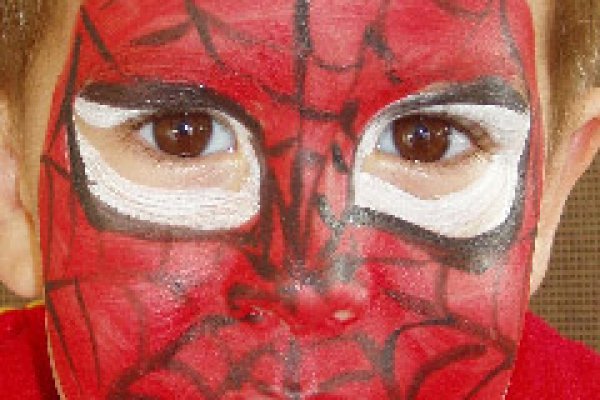Как войти на сайт кракен

Кто не отоваривался на Гидре? Ещё. Как kraken обеспечивается безопасность на Кракен Маркетплейс? Широкий ассортимент товаров В Кракене вы найдете широкий ассортимент товаров - от наркотиков и оружия до фальшивых документов и краденых кредитных kraken карт. Дальше все не так уж и сложно, нужно придумать ник нейм, а так же указать ваш логин и пароль. При его движении в определенном положении можно увидить одну или несколько букв для их оригинальный последующего ввода. Следующим шагом будет вход на сайт. Арзамасский Георгий, который возглавил церемонию по случаю старта пробега. Ведь эта популярная платформа много лет лидировала на темном рынке. Все просто, не так ли? После того как вы перешли по ссылке и попали на сайт ппервое что вас попросят сделать это пройти проверку с помощью капчи, необходимо это для отсеивания ботов. Высшая степень защиты площадки Kraken Владельцы площадки Kraken учли ошибки и уязвимости прошлого, связанные с ИТ-инфраструктурой Гидры. Кракен Даркнет Лучшая площадка - Кракен 1 в даркнет. Это главные правила по входу и регистрации на сайте. Мы также используем механизмы эскроу-счетов, чтобы защитить вашу оплату до тех пор, пока вы не получите свой товар. Пройдите процедуру регистрации. Мне нравился такой образ жизни, но когда Гидра закрылась, я начала трезветь. Все прошло идеально, квест не сложный. На новых маркетплейсах поддержка работает из рук вон плохо, а на Гидре работали модераторы профессионально. Процесс входа на сайт и заказа товаров с маркетплейса. После этого введите текст и загрузите фото, а затем подтвердите регистрацию. Безопасность и конфиденциальность: рассказать о мерах безопасности и конфиденциальности на Кракен даркнет маркетплейс, таких как шифрование данных, защита от взломов и хакерских атак, гарантии анонимности покупателей и продавцов.д. Далее следуйте инструкциям и заполните необходимые данные для создания аккаунта. После этого пользователь получает доступ к широкому ассортименту наркотических средств, включая кокаин, героин, марихуану, LSD и многие другие. В России пройдет 12-й велопробег «Дорога к храму» в честь 120-летия со дня обретения святых мощей и канонизации преподобного Серафима Саровского. Меня не радует покупка моего любимого товара на Солярисе или на Меге. Просто повторите попытку еще раз или перезагрузите страницу. Нижегородской области. Затем в адресной строке введите официальную ссылку, которая указана на нашем портале. В данном случае нам нужно точно понимать какую ссылку мы будем использовать. Мы тщательно проверяем каждого продавца, чтобы убедиться, что он предлагает только высококачественные товары. Более полугода я не могла найти качественное хмурое, потому что не доверяла новым маркетплейсам. VK2 Вы знакомы с новой системой зеркал, а именно доменных имен площадки Кракен? Выгодный обмен с минимальной комиссией Кроме того, как часть промо-акции, новая площадка стремится привлечь аудиторию, предлагая минимальную комиссию на обмен BTC на карту или Qiwi. Какие методы оплаты доступны на Кракен Маркетплейс?
Как войти на сайт кракен - Kraken marketing lab
о, несмотря на высокую репутацию Kraken, в интернете можно найти достаточно много негативных комментариев о работе платформы. Верификация на бирже Kraken На первом уровне трейдеру следует предоставить информацию, содержащую ФИО, адрес проживания, номер мобильного. Регистрация на бирже представляет собой довольно страндартную процедуру - нужно перейти на сайт биржи m/ru-ru/ (русская локализация) и нажать кнопку "создать аккаунт" в верхнем правом углу. Kraken американская криптовалютная биржа, основанная в 2011 году в Сан-Франциско. Регистрация Для начала работы с платформой Bittrex Биржа Liqui обзор, регистрация и инструкция по работе Биржа криптовалют Liqui была запущена в 2016 году, и не смотря на то что часть команды разработчиков из Украины, интерфейс биржи доступен только на английском языке. Дополнительным преимуществом станет OTC торговля. Биржа разделяет аккаунты пользователей на 4 разных уровня, каждый из которых предлагает дополнительные функции, более высокие лимиты и больше возможностей пополнения и вывода. Помимо этого, аккаунты второго уровня позволяют торговать фиатными парами, имеют увеличенный лимит на вывод криптовалют в день. Для фиатных операций пользователю придется получить одобрение сервиса на следующем уровне верификации. На следующем, завершающем этапе, система перенаправит пользователя на страницу активации аккаунта, где запросит ключ, логин и пароль. Торговые операции с использованием стейблкоинов оплачиваются по-разному, но трейдеры с 30-дневными объемами торгов выше 1 млн. Платформа по-прежнему довольно популярна среди трейдеров из США и Канады. Нажимаем Add address: Вводим: Description, это описание кошелька, то есть информация только для вас. Кукоин часто добавляет валюты ещё до того, как они появляются на конкурирующих платформах. Также это одна он из немногих бирж, которая предлагает нулевые комиссии для трейдеров с большими объемами. После открытия, программа самостоятельно настроит соединение. Для того, чтобы получить возможность выполнять данные операции следует сперва пройти верификацию и получить как минимум уровень Starter. Tether (usdt) - бесплатный депозит, 5 usdt комиссия за вывод. Для одобрения Legend необходимо обращаться непосредственно в службу техподдержки. Менее популярные торговые пары имеют проблемы с ликвидностью, поэтому, опять же, это не лучший вариант для тех, кто работает с малоизвестными цифровыми активами. С первых дней Kraken придерживалась строгих внутренних стандартов тестирования и безопасности, оставаясь в закрытой бета-версии в течение двух лет перед запуском. После утверждения данных службой безопасности, трейдер сможет совершать ввод и вывод криптовалюты, торговать на бирже, использовать маржинальную торговлю. Биржа регулярно проводит внутренний аудит и старается демонстрировать прозрачность даже в условиях недобросовестной конкуренции. Поддержкой сайта и выслать им сканы документов о регистрации предпринимательской деятельности и составить договор с биржей Kraken. Для трейдеров с 30-дневным объемом торговли менее 50 000 Kraken взимает 0,16 для мейкеров и 0,26 для тейкеров, но эта комиссия снижается до 0 и 0,10 соответственно при объеме выше 10 млн. Негативный отзыв о Kraken В последний раз подобный отказ в работе сервиса был зафиксирован летом 2019 года: Однако далеко не всем даже удается приступить к торгам на данной платформе. Открывается он по нажатию на пиктограмму графика слева от названия валютной пары: Вывод средств Чтобы совершить вывод переходим во вкладку Funding, выбираем Withdraw: В списке слева выбираем нужную нам для вывода криптовалюту: Далее следует добавить кошелёк для вывода. Что касается возможностей, то в дополнение к уже имеющимся преимуществам пользователь получит доступ к торговле фьючерсами при более высоких объемах торгов. Подтвердить операцию. После этого можно приступать к выводу. Про. Также, без сканов документов, которые вы предоставляете в Tier 3, уровни Tier 1, 2 не будут подтверждены! 0,0001 LTC минимальный депозит и 0,01 LTC минимальная сумма вывода. Нажать на Trade в верхней части личного счета.

Используя наши подсказки, вы с легкостью попадете на сайт Кракен и совершите много удачных покупок. Огромный вклад в развитие теневого Интернета внесла научная лаборатория US Naval Research Lab, разработавшая специальное программное обеспечение прокси-серверов, позволяющих совершать анонимные действия в интернет-сети The Onion Router, более известное как. ProPublica освещает все противоречивые истории о коррумпированных политиках, детском труде. Нужно скопировать ключ активации и возвратиться на страницу биржи криптовалют. Для начала нужно скачать защищенный браузер TOR. Там же размещены актуальные зеркала, которые постоянно обновляются. То есть адрес должен заканчиваться на ".onion" или ".com никаких "onion. Оплата за товары и услуги принимается также в криптовалюте, как и на Гидре, а конкретнее в биткоинах. Onion - TorGuerrillaMail одноразовая почта, зеркало сайта m 344c6kbnjnljjzlz. И самые высокие цены. Даркнет отвечает всем нуждам пользователей, в зависимости от их запросов. Zcashph5mxqjjby2.onion - Zcash сайтик криптовалютки, как bitcoin, но со своими причудами. Вместо курьера вы получите адрес и описание места где забрать заказ. Onion - Sci-Hub,.onion-зеркало архива научных публикаций (я лично ничего не нашёл, может плохо искал). Разумеется, подавляющему числу людей нечего скрывать, но крайне неприятно осознавать, что ты находишься под постоянным колпаком спецуры, каждый твой шаг отслеживается и фиксируется, и кто-то регулярно пытается поковыряться своими шкодливыми ручонками в твоём «грязном белье». Onion/rc/ RiseUp Email Service почтовый сервис от известного и авторитетного райзапа lelantoss7bcnwbv. Мы подобрали для вас две самые оптимальные и стабильно рабочие ссылки на кракен: и http kraken2trfqodidvlh4aa337cpzfrhdlfldhve5nf7njhumwr7instad. Kraken - сайт кракен на торе как зайти, безопасный вход на kraken, площадка кракен сайт kraken ssylka onion, kraken зеркало сегодня, про kraken сайт, адрес сайта кракен onion top, кракен сайт в обход onion top, ссылки для крамп, сайт. Для мобильных устройств: Скачать VPN - iphone android После окончания установки, запустить приложение и установить соединение. Здесь вы без труда можете купить шишки и бошки, ПАВ, документацию и множество других товаров, не опасаясь за это попасть под уголовное преследования. Это займет всего несколько лишних минут, зато вы будете уверены, что легко попадете на сайт и будете в безопасности. Onion - 24xbtc обменка, большое количество направлений обмена электронных валют Jabber / xmpp Jabber / xmpp torxmppu5u7amsed. При этом на полной скорости машина может разгоняться до 350 километров в час. При помощи них вы легко попадете на сайт. Регистрация При регистрации учетной записи вам предстоит придумать логин, отображаемое имя и пароль. Onion сайтов в сети Tor. P/tor/192-sajty-seti-tor-poisk-v-darknet-sajty-tor2 *источники ссылок http doe6ypf2fcyznaq5.onion, / *просим сообщать о нерабочих ссылках внизу в комментариях! Независимый архив magnet-ссылок casesvrcgem4gnb5.onion - Cases.